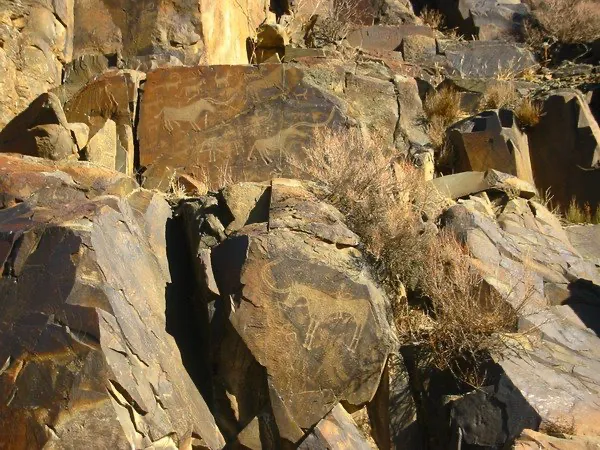Exploring the Historical Significance of Tanbaly
Tanbaly, located in the Almaty Region of Kazakhstan, stands as a significant archaeological site. It is renowned for its rich collection of petroglyphs. These ancient rock carvings provide a window into the lives of people who lived thousands of years ago. The site, nestled in the Chu-Ili Mountains, is about 170 kilometers northwest of Almaty city.
Get your dose of History via Email
The petroglyphs at Tanbaly date back to the Bronze Age, around the second millennium BC. They offer invaluable insights into the cultural and spiritual lives of the inhabitants of this region. The carvings depict a variety of scenes. These include hunting expeditions, animal husbandry, and ritual dances. Such images underscore the interconnectedness of community life and the natural environment during that era.
The Discovery and Recognition of Tanbaly
Researchers first documented the petroglyphs at Tanbaly in the 1950s. However, it wasn’t until 2004 that UNESCO recognized the site as a World Heritage Site. This recognition highlights the global importance of Tanbaly’s petroglyphs. It underscores their value not only to Kazakhstan but to the world at large.
The site features over 5,000 petroglyphs, making it one of the most extensive collections in Central Asia. The preservation of these carvings is a priority for both local and international heritage organizations. Efforts are ongoing to ensure that future generations can also appreciate these historical treasures.
Cultural and Historical Context of the Petroglyphs
The petroglyphs at Tanbaly provide a vivid portrayal of the Bronze Age cultures in Central Asia. The images carved into the rock surfaces are more than mere art. They are expressions of the daily lives, beliefs, and social structures of their creators. The scenes of warriors and hunters, for instance, reflect the martial and survival skills valued by these ancient societies.
Moreover, the depictions of animals such as goats and deer are not just artistic representations. They indicate the types of wildlife that were prevalent in the region during that time. This gives researchers clues about the climate and environmental conditions of the era.
The Importance of Tanbaly in Contemporary Times
Today, Tanbaly is not only a site of historical and archaeological significance but also a cultural symbol for Kazakhstan. It attracts tourists and scholars from around the world, eager to learn about the ancient human history preserved in its rocks. The site serves as a reminder of the rich heritage that can be found in Central Asia, often overshadowed by more well-known locations in other parts of the world.
Furthermore, the ongoing study and preservation of Tanbaly help foster a greater appreciation for archaeological practices and heritage conservation. They also promote sustainable tourism practices that respect and preserve historical sites.
In conclusion, Tanbaly is a treasure trove of ancient art, history, and culture. Its petroglyphs tell the story of a time long past but still relevant to our understanding of human history and cultural development. As we continue to explore and study sites like Tanbaly, we gain more than just knowledge. We also develop a deeper connection to our shared human past.
Sources: Wikipedia

